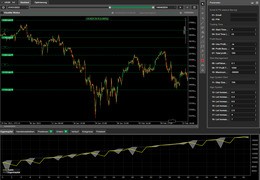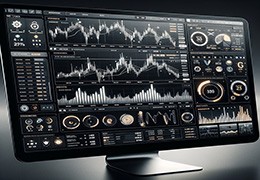Between reality and illusion If you want to know what trading really means—beyond luxury cars, piles of cash, and...
Search in blog
Blog categories
- FAQ – Your guide through the world of finance and technical facilities (2) click
- Daytrading Almanac (27) click
- Press release (23)
- Educational (26) click
- Projects (9)
- Chart analysis (39) click
- Trading bots for cTrader (11)
- AI in trading (5)
- Trading Strategien (11)
- Trading signals and stock market letters (46)
Latest posts

When it comes to traders, social media platforms often create a rather one-sided image: a young face smiling at the...

The TegasFX Instant Funding program sets a new standard for traders seeking quick access to capital without having to...

Backtesting trading strategies is an essential tool for traders who want to validate their methods across historical...

introduction In the world of trading, it can be challenging to balance the intense market activity and the rapid...
Popular posts





Featured posts





Photo gallery
No featured images
Archived posts
Top authors
-
 Christian Lill 70 Posts View posts
Christian Lill 70 Posts View posts -

-

-

-

Use technical analysis
Introduction:
In the world of trading and investing, it is essential to use the right tools and strategies to make profitable decisions. One of the most effective methods for identifying patterns and trends in the markets is technical analysis. This analysis technique is based on using historical price data to predict potential future price movements.
In this blog post, we will explain the basics of technical analysis and how it can be used in volatile markets to make informed trading decisions. We will also take a closer look at popular indicators such as moving averages, the Relative Strength Index (RSI), and the Moving Average Convergence Divergence (MACD) and how they can be used to determine optimal entry and exit points.
Basics of technical analysis:
Technical analysis refers to the study of historical price data to identify patterns and trends that may indicate future price movements. This analysis technique is based on the assumption that prices move in trends and that these trends tend to continue.
A fundamental concept in technical analysis is support and resistance levels. Support levels are price levels where demand is strong enough to prevent further price decline, while resistance levels are price levels where supply is strong enough to prevent further price rise. By identifying these levels, one can determine potential entry and exit points.
Popular technical indicators:
There are a variety of technical indicators that can help traders and investors identify patterns and trends in the markets. One of the most popular indicators is the moving average, which shows the average price of a stock over a specific period of time. This indicator is often used to determine the overall trend of a stock.
Another important indicator is the Relative Strength Index (RSI), which measures the strength and speed of price movements. The RSI moves on a scale of 0 to 100 and is often used to indicate overbought or oversold conditions.
The Moving Average Convergence Divergence (MACD) is another popular indicator that analyzes the relationship between two moving averages of a stock. The MACD can be used to identify potential trend reversals and determine entry and exit points.
Psychological and emotional aspects:
It is important to note that the interpretation of technical data is not only based on mathematical indicators, but also on psychological and emotional factors. Emotions such as fear, greed and herding behavior can influence price movements in the markets and affect the effectiveness of technical analysis.
Traders and investors should be aware of these psychological factors and learn how to incorporate them into their trading decisions. By understanding the psychological aspects of the market, one can better respond to changes and make informed decisions.
Conclusion:
Technical analysis is a powerful tool that can help traders and investors identify patterns and trends in the markets and make profitable trading decisions. By using popular indicators such as moving averages, RSI and MACD, traders can determine potential entry and exit points and optimize their performance.
However, it is important to note that technical analysis should not be viewed as the sole tool for decision-making. Traders should also consider other factors such as fundamental analysis, news events and market sentiments to develop a comprehensive trading strategy.
By understanding the psychological and emotional aspects of the market and using technical analysis tools effectively, traders and investors can navigate the markets more successfully and achieve long-term success. Use the power of technical analysis to optimize your trading decisions and achieve your goals.
Leave a comment
Related posts
 Adjustment of trading sizes
Adjustment of trading sizes
 Setting stop loss and take profit
Setting stop loss and take profit
 Diversification
Diversification
 Stay informed and flexible
Stay informed and flexible
